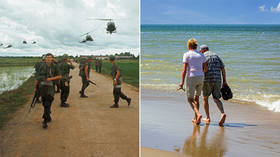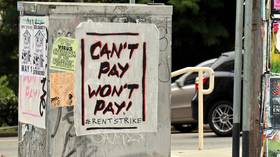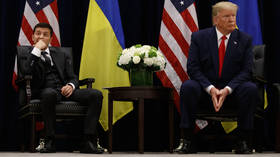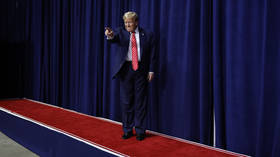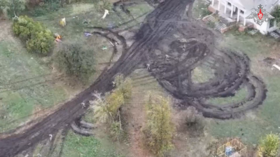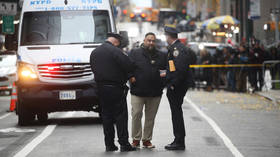50 years ago today US troops massacred antiwar protesters at Kent State. Now, imperialists don’t need guns; they use the media
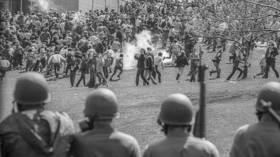
“My God, they’re killing us”: On May 4, 1970, heavily armed National Guard soldiers used live ammunition to slaughter unarmed students on an American university campus who were protesting against the US invasion of Cambodia.
Just after noon that day, 28 National Guard troops fired 67 rounds from their M-1 rifles into a crowd of antiwar protesters at Ohio’s Kent State University. The volley lasted at least 13 seconds. By one reporter’s eyewitness account, it lasted a minute or more.
When it was over, four students lay dying: Jeffrey Miller, Allison Krause, William Schroeder and Sandra Scheuer. Nine were wounded, with one suffering lifelong paralysis.
Most of the victims had been marching against President Richard Nixon’s criminal invasion of Cambodia, announced on national television four nights before. Some had just been passing by or observing from a distance.
In subsequent commissions and trials, the guardsmen testified they had to fire because they “feared for their lives.” The claim was absurd: the heavily-armed troops faced no threat remotely sufficient to justify their use of deadly force.
Thirteen years ago, Alan Canfora, one of the injured students, released an enhanced audio recording of the incident. Right before the gunfire, he says, a commander’s voice in the background can be heard ordering “Right here! Get set! Point! Fire!”
Incredible as it seems nearly two generations later, the National Guard used live ammunition against unarmed teenagers and young adults on an American college campus.
Also on rt.com ‘Welcome to Police Industrial Complex’ – former Philly commissionerSlaughter of Southeast Asia
It was a watershed moment for a nation torn by the American Empire’s long crucifixion of Southeast Asia, which killed between three to five million Vietnamese, Cambodians, and Laotians between 1962 and 1975.
The Kent State killings helped tilt US public opinion against the war.
Much of America’s corporate media was briefly shaken out of its normal indifference to the nation’s antiwar protesters. A vivid photograph of a young woman screaming as she crouched over the body of Jeffrey Miller appeared on the front page of newspapers across the country.
Life Magazine published a dramatic pictorial montage, including numerous large images showing the National Guard kneeling and firing into the students.
Newsweek published articles titled ‘My God, They’re Killing Us’ and ‘Who Guards the Guard?’
Time Magazine’s account, titled, ‘Martyrdom That Shook the Country,’ included sympathetic profiles of the four murdered students.
Missing in the predominant majority of the journalistic accounts of the time (and ever since) was any serious discussion of what the activism was about: moral revulsion against the Nixon administration and the US government’s imperial, mass-murderous, and monumentally criminal assault on Southeast Asia (the so-called Vietnam War).
Widespread killings of innocent protesters
It was hardly the first or the last time that the US military and police state murdered participants in the great popular rebellions of the 1960s and 1970s.
During the widely forgotten Orangeburg Massacre of February 8, 1968, South Carolina Highway Patrol Officers shot into a crowd of 200 civil rights protesters, killing three young black men.
The Federal Bureau of Investigations and local police murdered militant black organizers like the 21-year old Chicago Black Panther leader Fred Hampton, felled in a fusillade of Chicago police bullets in his apartment in late 1969.
Ten days after the Kent State massacre, police shot into a crowd of 100 unarmed black students, killing 2 and injuring 12 at Jackson State University in Jackson, Mississippi.
A 1973 reign of terror conducted by the FBI and the Bureau of Indian Affairs murdered dozens of Native Americans on the Pine Ridge reservation in Wounded Knee, South Dakota.
But the Kent State Martyrs (murdered on the same day of the still mysterious bomb incident that led to the execution of Chicago’s 4 Haymarket Martyrs in 1887) were not the usual suspects on the wrong end of the US military and police state’s gunsights. They were sons and daughters of white middle-class parents, some of whom were seeing their children drafted alongside lower- and working-class young adults into a disastrous and illicit war on the other side of the planet.
In the incident’s immediate aftermath, student strikes shut down at least four hundred colleges, and universities took part in the nation’s first general student strike. Antiwar activities exploded in various forms: flags lowered to half-mast, symbolic funerals, sit-ins, occupations, marches and blockades. ‘Riot troops’, including National Guard units, were stretched to their limits from coast to coast.
“It was an exhilarating time,” wrote Tom Wells in his 2016 book The War Within: America’s Battle Over Vietnam: “The antiwar movement was alive as never before. The political possibilities seemed stupendous. A truly general strike against the war was not inconceivable.”
Also on rt.com We bombed it, we own it: US wants China to take its hands off Cambodia‘Bomb them back to Stone Age’
No such general strike occurred and Nixon’s assault on Cambodia (sadly deleted from the Articles of Impeachment that would have led to his removal from office had Nixon not resigned) continued, as part of the Pentagon’s infamous strategy to “bomb them back into the Stone Age.”
“Between 1969 and 1973,” John Pilger has noted, “American bombers killed three quarters of a million Cambodian peasants in an attempt to destroy North Vietnamese supply bases, many of which did not exist. During one six-month period in 1973, B-52 bombers dropped more bombs on Cambodians, living mostly in straw huts, than were dropped on all of Japan during all of the Second World War.”
Still, the Kent State incident is widely credited by historians with hastening the end of the US assault on Southeast Asia and the Nixon presidency.
Half a century later, there is little real antiwar movement left to speak of in the United States. In a critical lesson from the Vietnam era, Washington resolved to end the military draft and never again to rely on a citizen army drawn from the full ranks of the population. The heavily recruited all-‘volunteer’ US Armed Forces draws its imperial ‘boots on the ground’ from the working- and lower-classes, who often feel compelled to join the military for economic reasons.
The ever-more militarized and high-tech American police state responds to mass protests not with live ammunition, but with non-lethal crowd control methods and technologies and legal penalties that disperse and punish marchers and resistors without creating martyrs like the Kent State victims.
Meanwhile, the ever more concentrated US corporate media has continued to ignore the immoral, illegal, and imperialist nature of US foreign policy even as Washington has consistently wreaked mass murderous havoc around the world, from Africa, Latin America, and Asia to the Middle East and Eastern Europe.
On the rare occasions that domestic protest emerges against US foreign policy (as when Donald Trump assassinated Iran’s top military commander in Iraq last January), the consent-manufacturing US media tends to focus on the protesters themselves while paying little if any attention to what the activism is about.
Think your friends would be interested? Share this story!
The statements, views and opinions expressed in this column are solely those of the author and do not necessarily represent those of RT.
